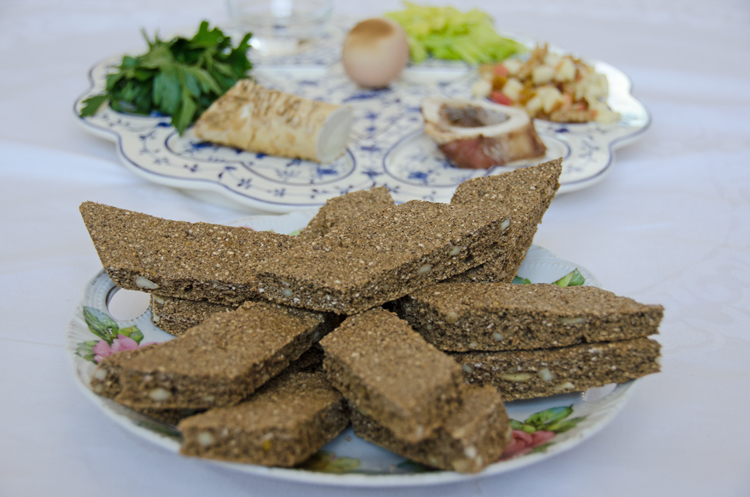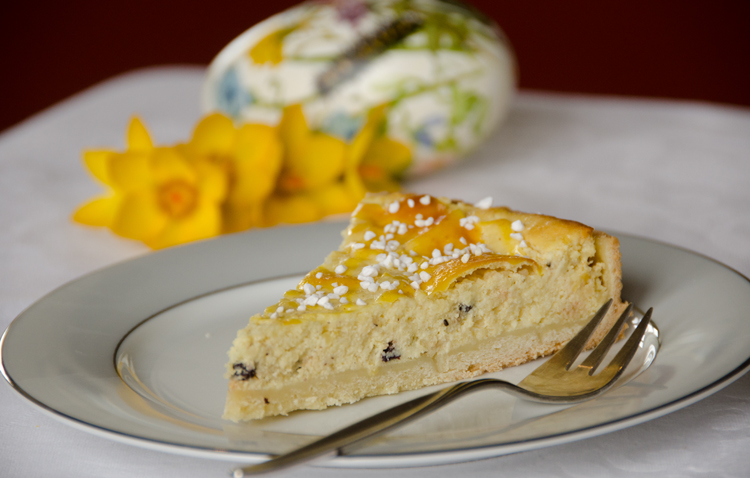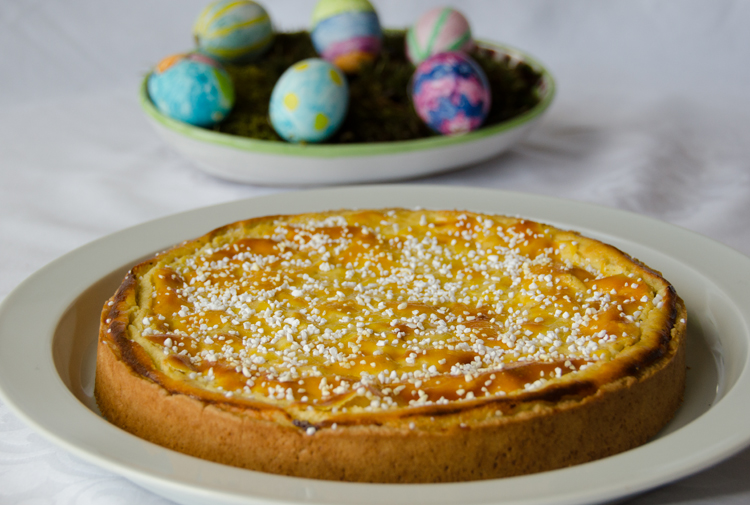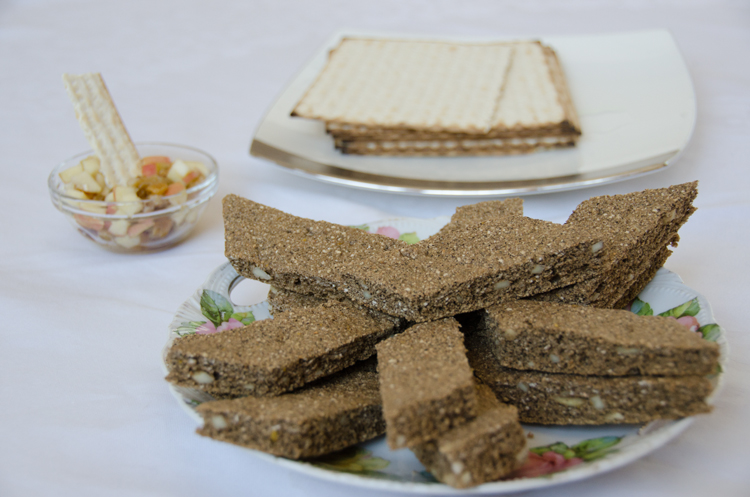This might sound rather strange – I was initially introduced to Judaism, Jewish customs and traditions, and Yiddish language by a collection of Jewish jokes. As a teenager in Germany I found a yellowed paperback from 1963, Salcia Landmann’s Jüdische Witze, among my mother’s books. Mind you that these are jokes by Jews, not about them. I read the 200 pages of jokes from beginning to end over and over. It is the only book of jokes I ever read.
The snippets I picked up from those jokes still stuck with me when many years later, I made Jewish friends, spent a summer in Jerusalem learning Hebrew, and eventually met my Jewish-American husband. Because of these jokes, I knew about phylacteries, sidecurls, prayer shawls and their Hebrew or Yiddish names. I knew that the opposite of kosher is called treif. And I learned enough Yiddish words to know that you better watch out when you encounter a Schnorrer, and that Schiksa is not a nice word for a gentile female.
In hindsight, I think the reason why I latched onto this little book was because it was a lighthearted glimpse into a vanished Jewish world at a time when everything Jewish seemed to be inextricably linked and connected to the Jewish genocide. The airing of the US television series Holocaust in 1979 in Germany set in motion an avalanche of media coverage, memoirs, documentaries, and movies about Nazi Germany that lasts to the present day. The airing of that TV series became a turning point in the public processing of German guilt and Nazi crimes towards Jews, Gypsies and other minorities. It tells you something that in 1979, the Association for the German Language (Gesellschaft für deutsche Sprache, GfdS) selected “Holocaust” as the word of the year.
Salcia Landmann was born in Polish Galicia in 1911 (now western Ukraine). At the outbreak of Word War I her family fled to Switzerland. Landmann became a specialist in Yiddish literature and Jewish cultural history, including food. Her book about Jewish jokes was a bestseller and translated into several other languages. She described it as a “quiet requiem for the lost Jewish civilization of Eastern Europe”.
Landmann’s book moved with me to America. As I was writing this post, I leafed through it again but had to stop myself and put it back on the shelf, otherwise I would not have gotten any baking done for Passover. And Easter, for that matter. Because we celebrate a bit of both. That’s why in a year like this when Passover and Easter coincide, in our house there are Easter eggs next to the Seder plate.
Saxonian Easter Cake (Sächsischer Osterfladen)
Although German baking has a huge and fabulous repertoire of baking recipes, there aren’t many traditional recipes dedicated specifically to Easter, at least not by their name. Osterfladen, a lesser-known scrumptious cake from Saxony, is one of the few.
Originally this cake is made with quark and if you find it, by all means, use it. If you don’t, Greek yogurt works great too. Whatever you use, drain it well.
Dough:
8 tablespoons (115 g) unsalted butter, chilled
1 2/3 cups (225 g) all-purpose flour
¼ cup (50 g) sugar
1 small egg
2 teaspoons vanilla extract
1 pinch of salt
Filling:
18 ounces (500 g) quark or 0% Greek yogurt
2 tablespoons golden rum
1 pinch of saffron threads
½ cup (75 g) dried currants
2/3 cup (100 g) blanched whole almonds
5 large egg yolks, divided
Finely grated zest of 1 organic lemon
½ cup (100 g) sugar
1 tablespoon real vanilla sugar (how to make your own vanilla sugar, see here)
Swedish pearl sugar or regular sugar for sprinkling
1. Cut the butter into small chunks and put it with the flour in the food processor fitted with a blade . Process it to a crumbly consistency. Add the sugar, egg, vanilla extract, and salt. Process again until it holds together in a ball. Transfer the dough to a container with a lid and refrigerate for 1 hour.
2. While the dough is chilling, drain the Greek yogurt in a fine sieve or a colander lined with two layers of cheesecloth. Heat the rum in a small bowl. Add the saffron and set aside. Soak the currants in warm water for 10 minutes, then drain and pat dry with paper towel. Finely grind the almonds in the food processor.
3. Roll out the dough between two layers of wax paper or parchment paper to a 12-inch (30 cm) circle. Line the bottom of a 10-inch (25 cm) springform pan with parchment paper and grease the sides. Carefully drop the dough into the pan with a 1-inch (2.5 cm) edge all around. Even out the edge with a knife. Prick the bottom with a fork several times. Refrigerate.
4. For the filling beat the drained quark or Greek yogurt with 4 egg yolks, sugar, and vanilla sugar until smooth. Strain the rum through a fine sieve. It should be bright yellow from the saffron. Add the rum together with the currants, almonds and lemon zest. Stir until well combined.
5. Pour the filling into the chilled pastry shell and bake in the preheated oven for 8 to 10 minutes, or until the filling has just start to set.
6. Beat the remaining egg yolk. Carefully take the cake out of the oven and drizzle the egg yolk over it. Return the cake to the oven and bake for another 50 minutes, or until golden brown.
7. Remove from the oven and immediately sprinkle with Swedish pearl sugar or regular sugar. The heat will melt it so it forms a delicate crunch. Let cool completely and remove from the pan.
Makes 12 to 16 servings
Passover Almond Coffee Bars (Mandelschnitten)
Adapted from Kochbuch für israelitische Frauen by Rebekka Wolf, 13th edition, 1912
As I wrote in a previous post, typical German-Jewish recipes are hard to find but the Passover chapter of Rebecca Wolf’s popular 19th-century German-Jewish cookbook contains a recipe for these delicious coffee-flavored almond bars.
Update: When I wrote this post in April 2017, The German-Jewish Cookbook by Gabrielle Rossmer Gropman and Sonya Gropman had not been published yet. It contains a wealth of German-Jewish recipes. See my blog post about it here.
4 eggs
2 2/3 cups (200 g) confectioners’ sugar
½ cup (65 g) peeled slivered almonds
3 tablespoons (15 g) very finely ground coffee
2 teaspoons cinnamon
½ teaspoon ground allspice
1/8 teaspoon ground cloves
¼ teaspoon ground cardamom
Finely grated zest of 1 organic lemon
Pinch of salt
2 cups (240 g) matzo meal or finely ground matzo (made from white or whole-wheat matzo)
1. Preheat the oven to 350 degrees F (180 degrees C). Line a 10×15-inch (25×37 cm) non-stick jelly roll pan or similarly sized rimmed baking sheet with parchment paper.
2. Beat the eggs and the sugar with an electric mixer for 5 minutes until light and fluffy. Add almonds, coffee, spices, and salt. Add the matzo meal to make a thick but still streadable dough. If the eggs are small, you might need less than the 2 cups.
3. Spread the dough onto the prepared pan and even it out with a spatula.
4. Bake for 15 minutes, or until a toothpick comes out clean and the top is lightly browned. Carefully unmold onto a large cutting board or clean work surface. While still warm, cut into bars. Let cool completely on a cake rack. Store in an airtight container.
Makes about 25 bars






April 23, 2016 at 9:17 am
Interesting post – hope to try both. The Osterfladen reminds me of Yorkshire Curd tarts with a couple of more exotic additions.
April 27, 2016 at 1:55 pm
If you make either one, it would be great to know how they turn out for you.
April 25, 2016 at 11:01 am
Have you tried it with almond flour?
April 27, 2016 at 1:45 pm
Donna – No, I have not tried the cake with almond flour. I usually start with whole almonds that I peel and grind myself because I find that almond flour, unless it is very fresh, tends to be a bit dry.
April 19, 2019 at 5:57 pm
This brought back memories…I think my parents had the same joke book, and I was equally fascinated by it. I will try your recipes…they sound good❣️
April 22, 2019 at 8:19 am
Mirjam, Nice to know someone else remembers that book too.